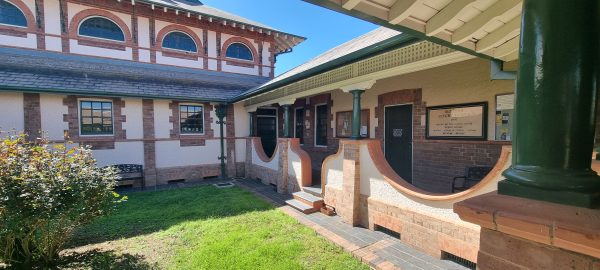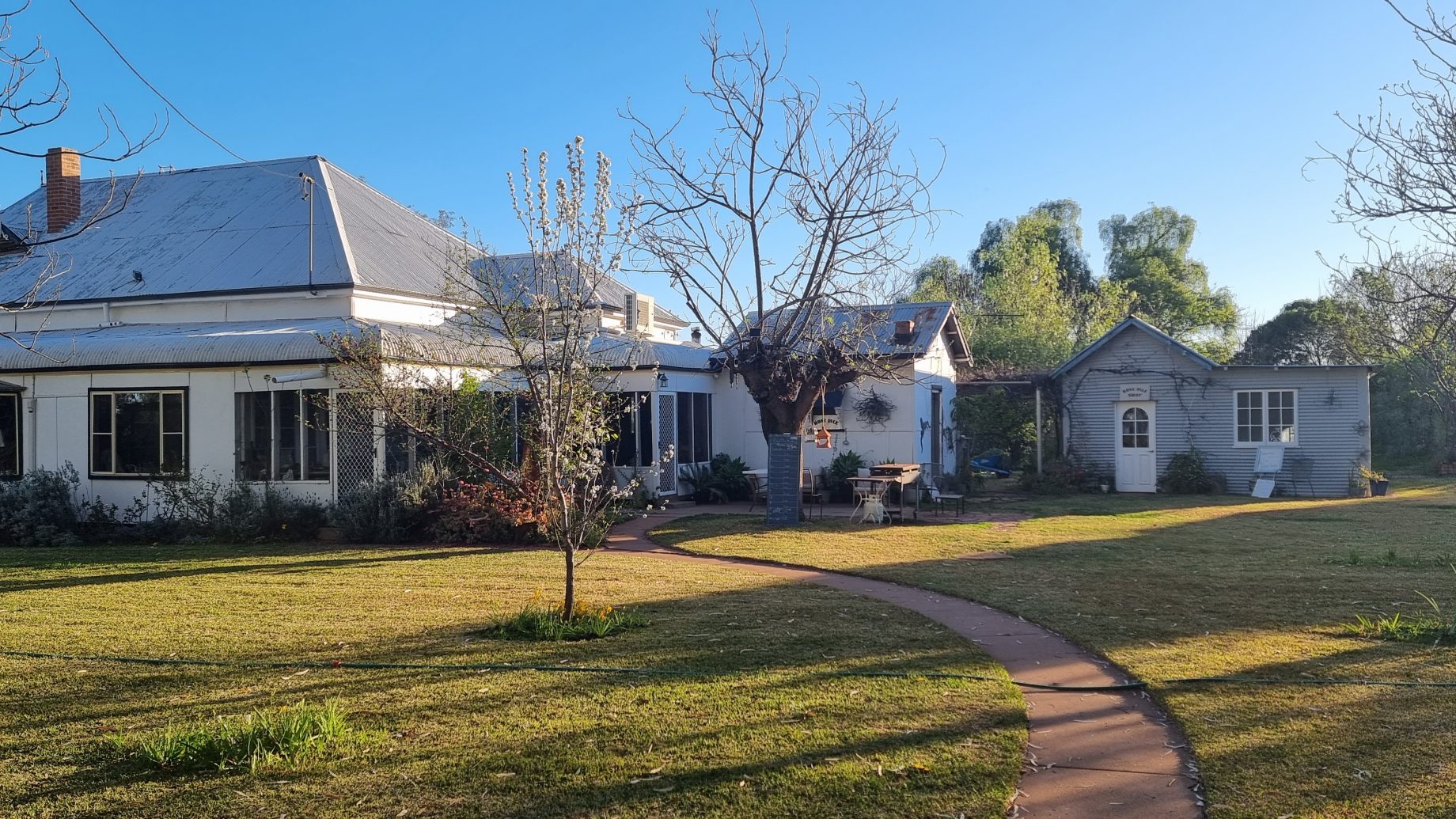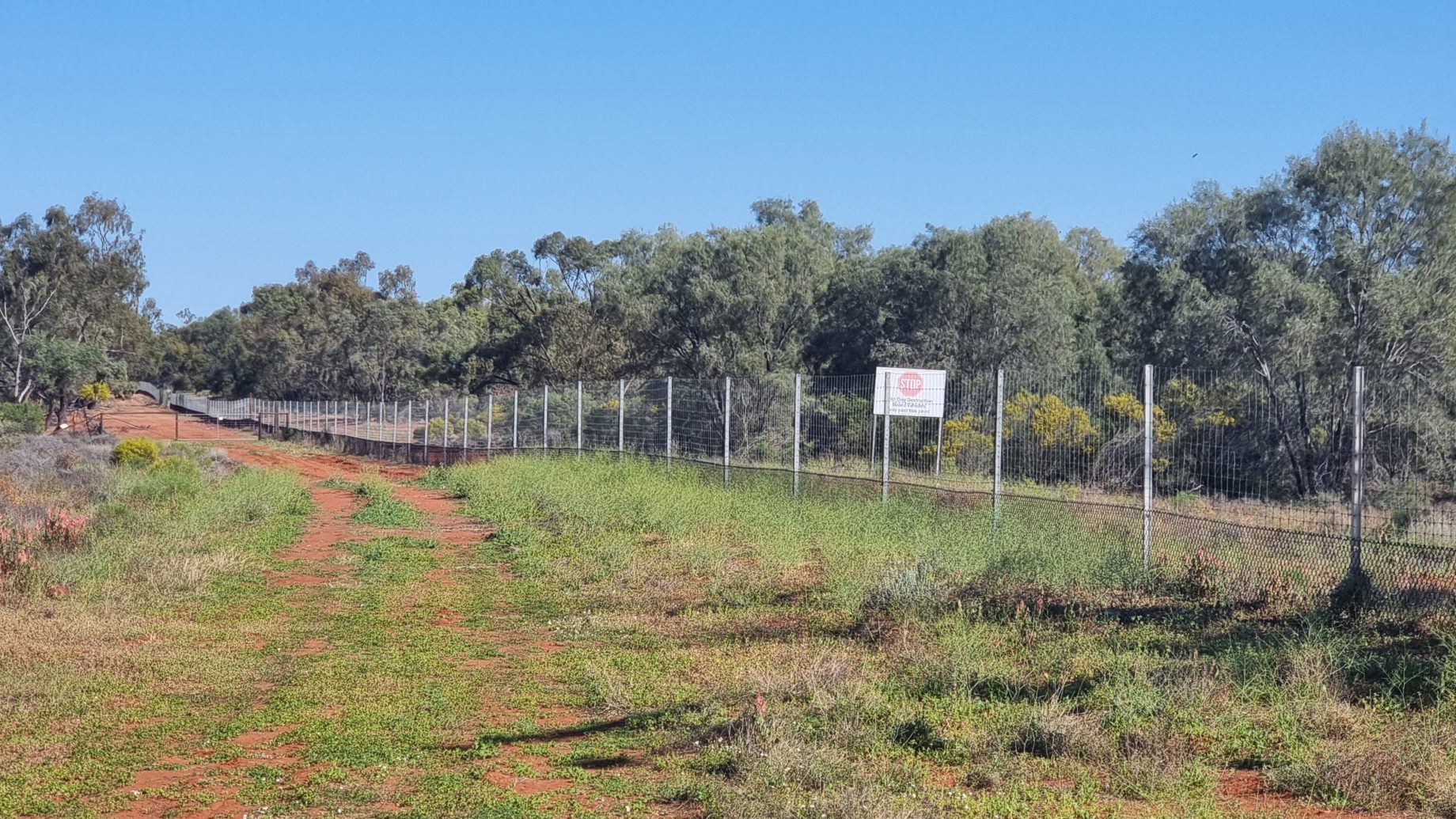Our time at Currawinya National Park came to an end all too soon. There was unanimous agreement (between the two of us!) that we would come back for a longer stay at some time in the future – there is so much more to explore.
Our campsite was roughly 30kms north of Hungerford, which is right on the Queensland / NSW border. We stopped briefly in Hungerford to check and book accommodation in Mildura – and also to check on a farm stay just south of Bourke. With that administration completed we just had to follow a tradie’s ute across the border then close the gate behind us. The drive through to Bourke was on the Dowling Track – a reasonable gravel track for much of the 260kms, with a few short sections of sealed road to provide a break from the dust and occasional corrugations.
The landscape south of the Queensland border continued to remain flat, although there was a noticeable greening of the countryside as we continued. Standing water beside the track became more frequent and small lakes either side continued to hold water. The central bearded dragons continued to dice with death, sunning themselves on the road. Fortunately for them we managed to miss them all. A couple of snakes weren’t so lucky, although none were a result of us passing by.
Approaching Bourke we noticed that extensive irrigation channels had been constructed for what appeared to be large-scale cotton growing. The use of Murray-Darling water for cotton growing is very contentious. Those downstream claim that their livelihood is placed in jeopardy when uncontrolled water use deprives them of life-giving water, while those upstream claim they are generating income and providing jobs to remote communities. The balance seems to be somewhere in the middle. Controls over how much water can be drawn from the system could be tighter to ensure the river system remains sustainable in the longer term.
Bourke is a relatively large town in the north-western corner of New South Wales. It was once a major port for paddle steamers servicing the sheep stations in the area – they would pick up the wool clip and deliver it to Mildura, where it was then taken further downstream before being shipped overseas. Supplies for the various sheep stations would be brought upstream on a return journey that had to be timed with the seasons, as the Darling could become unnavigable in the dry summer months. We have seen the Darling River vary in height at the jetty in Bourke where the paddle steamers used to dock. The current water level is as good as we have seen it for a while, even though the water flowing is high in silt content. The town itself has gone through a beautification program since our last visit and it suggests the local residents are taking greater pride in their community.



The drive to our final destination for the day (Rose Isle Station) is approximately 65kms south of Bourke, on the Bourke-Louth road (which is mainly well-graded gravel). The countryside remained very green and, for the first time since we left the Flinders Ranges, we started spotting a number of goats. Feral goats have been an issue for years, but we understand more recent initiatives (including the opening of an halal processing facility in Wodonga that services an international market) has encouraged station owners to view them as a source of income.
Samantha, who manages the farm stay side of the business at Rose Isle Station, came to greet us as we arrived. We received an update on developments at the station since our last stay – including the opening of a shop / office where people can check in and souvenirs can be purchased. The camping area around the station homestead has been expanded. Twin baths, with water heated by a wood (‘donkey’) fire, have been positioned down by the river with a view downstream. The facilities have also been expanded to cater for more visitors. We commented that the land was looking as good as we had seen it and Samantha confirmed that this has been one of their best years on record. When we last visited, the region was just coming out off an extended drought which had forced most stations to de-stock. Ever since then the focus has been on restocking and building up herd numbers again. Samantha said that the station had previously carried upward of 8,000 head of sheep and that currently it was at 4,000 and building gradually.

We have set up a little way away from the main station camping area, beside the Darling River. The sound of darters diving for fish can be heard, along with a mix of birdsong coming from the trees that overhang the river. Wendy has done a load of washing and much of it has already dried in the afternoon sun and light breeze. The next item on our agenda is to freshen up in the showers before dinner beside the Darling River tonight.

